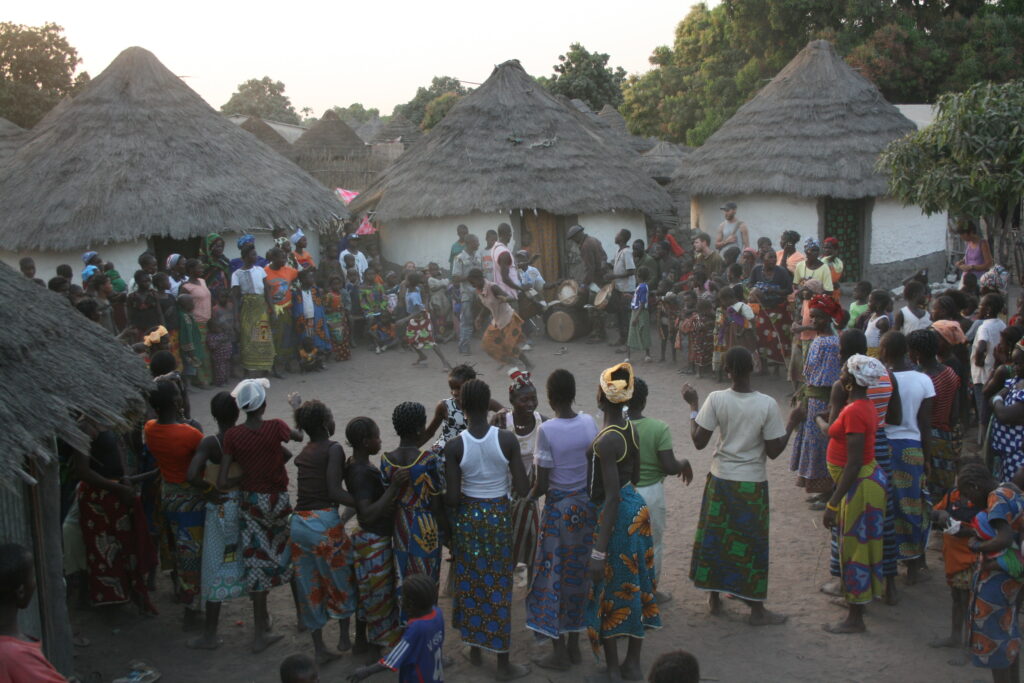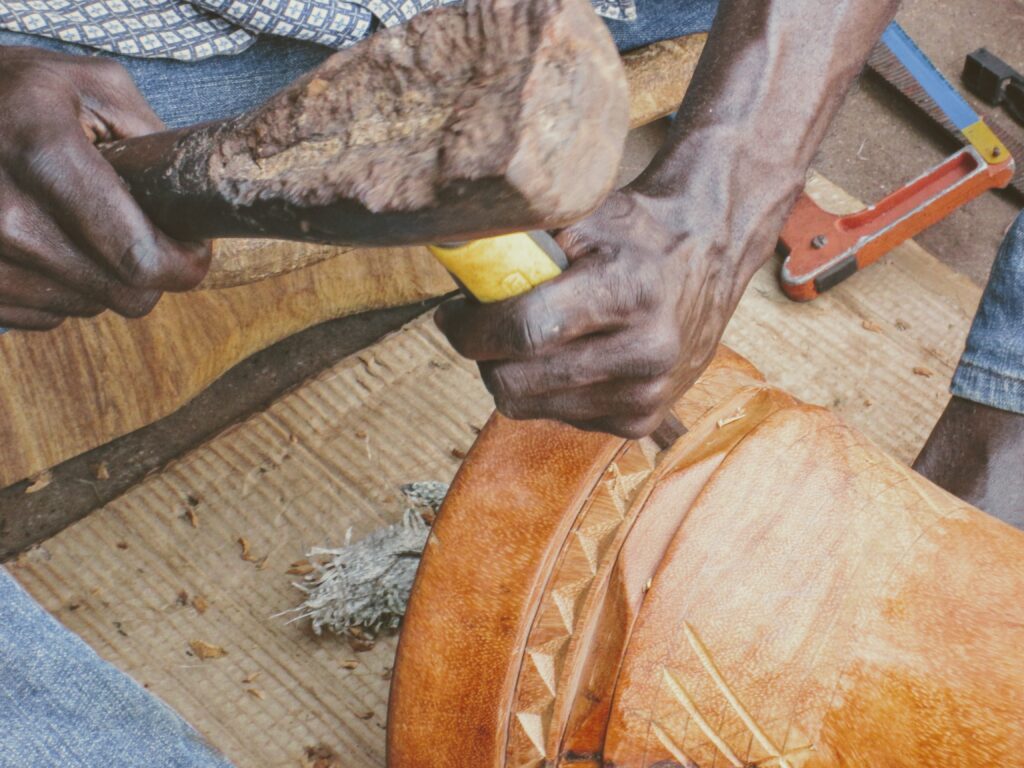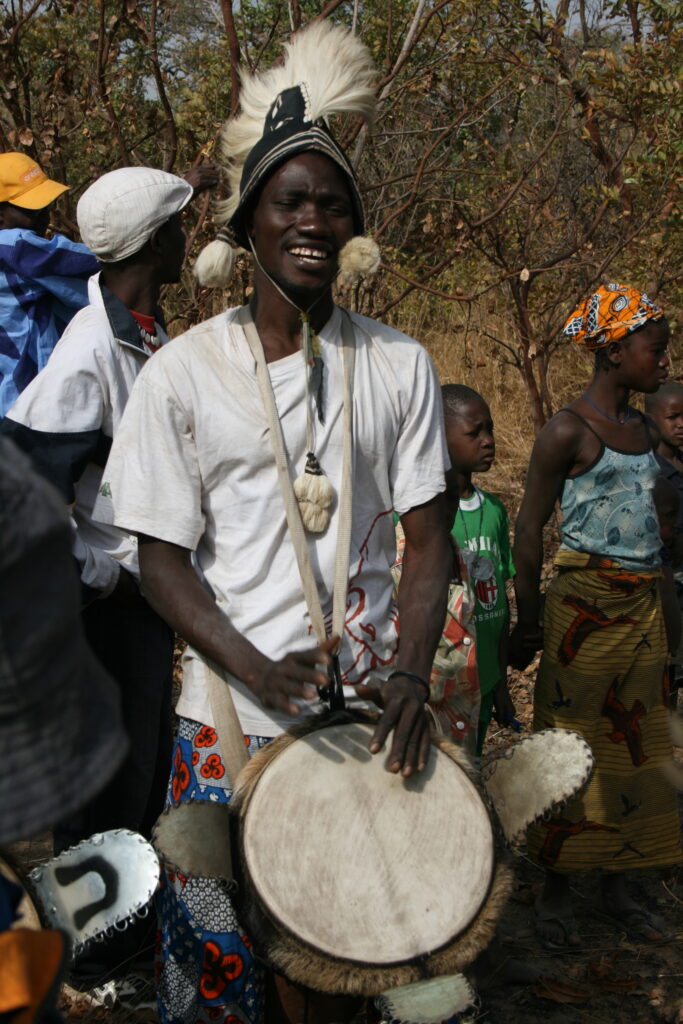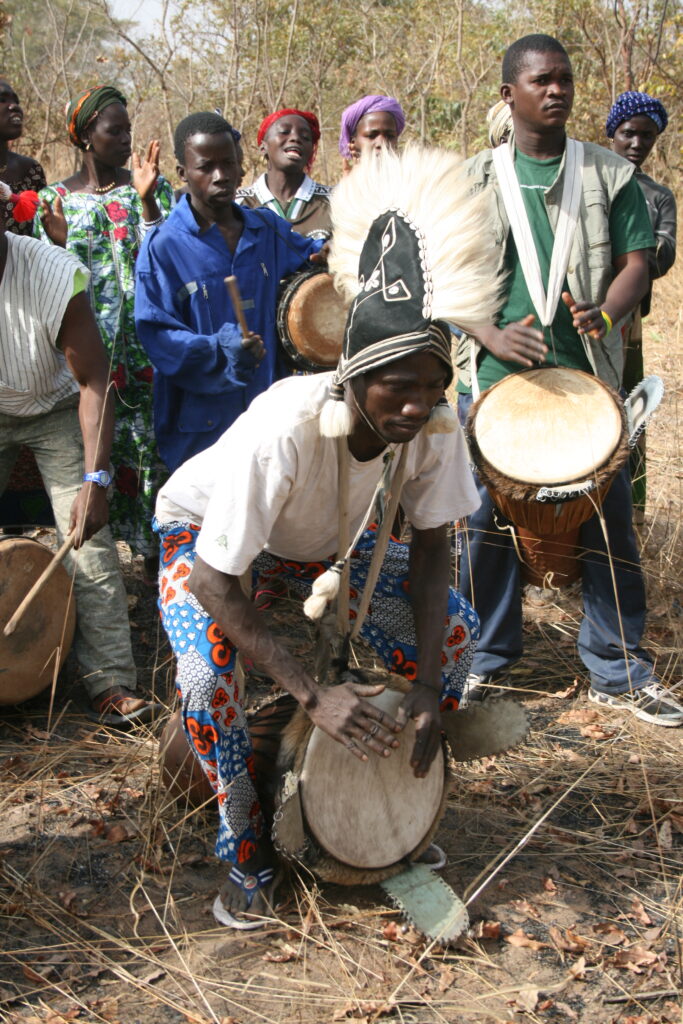
The djembe drum is more than just a musical instrument; it’s a cultural symbol that embodies the soul of West Africa. Revered for its dynamic range and powerful tones, the djembe has transcended its roots to become a beloved instrument worldwide. Let’s explore the rich history and cultural significance of this remarkable drum, a journey that begins over 800 years ago.
The djembe is believed to have originated among the Mandé people of West Africa in the 12th century. This was during the reign of the Mali Empire, one of the most powerful and culturally rich civilizations in African history. Crafted from a single piece of hardwood and topped with a goatskin drumhead, the djembe is traditionally carved from trees like lenke, iroko, or mahogany, all of which hold spiritual significance in Mandé culture.
The name “djembe” is derived from the Bamana phrase “Anke djé, anke bé,” which translates to “everyone gather together in peace.” This phrase reflects the drum’s purpose: to unite people through music and rhythm.
The djembe holds a central role in the social and ceremonial life of West African communities. It is used in various contexts, including:
Creating a djembe is an art in itself. Master craftsmen, known as “numu,” meticulously carve the drum’s shell, often embedding intricate designs that tell stories or symbolize cultural beliefs. The drumhead is made from goatskin, stretched and secured with rope to create the tension needed for its unique sound.
The tuning process is equally important. By tightening or loosening the ropes, the drum’s pitch can be adjusted, allowing it to produce the high slaps, deep bass, and rich tones that define its voice.

The djembe began its global journey in the mid-20th century, thanks to the efforts of master drummers like Mamady Keïta and Famoudou Konaté, who introduced the instrument to international audiences. Its versatility and expressive range quickly captivated musicians worldwide, leading to its adoption in genres ranging from jazz to contemporary world music.
Today, the djembe is not only a staple in African drumming ensembles but also a tool for education, therapy, and cross-cultural exchange. Its rhythms have found their way into classrooms, corporate teambuilding workshops, and even therapeutic settings, where it helps to reduce stress and build connections.
The djembe’s enduring appeal lies in its ability to connect people on a deep, emotional level. Whether played in a remote West African village or a bustling urban center, its rhythms transcend language and cultural barriers, speaking directly to the human spirit.
For those who have had the privilege of playing or hearing a djembe, the experience is transformative. Its beats seem to echo the heartbeat of humanity, reminding us of our shared origins and interconnectedness.
As the djembe continues to gain popularity, efforts to preserve its traditional roots remain crucial. Learning from master drummers, respecting the cultural context, and supporting ethical craftsmanship are all vital to honoring the legacy of this extraordinary instrument.
The djembe’s history is a testament to the power of rhythm to unite, heal, and inspire. Whether you’re a seasoned drummer or a curious newcomer, exploring the world of the djembe is an invitation to connect with a timeless tradition that celebrates the joy of being human.
So next time you hear the resonant call of a djembe, take a moment to appreciate the centuries of culture, craftsmanship, and community it represents. In its rhythms, you’ll find a story that’s as vibrant and enduring as the people who first brought it to life.


Copyright © Drumroots Workshop Ltd - All Rights Reserved
Phone: 07939 749 099
Address: 3 Gloucester Road, Denton, Manchester, M34 2HT